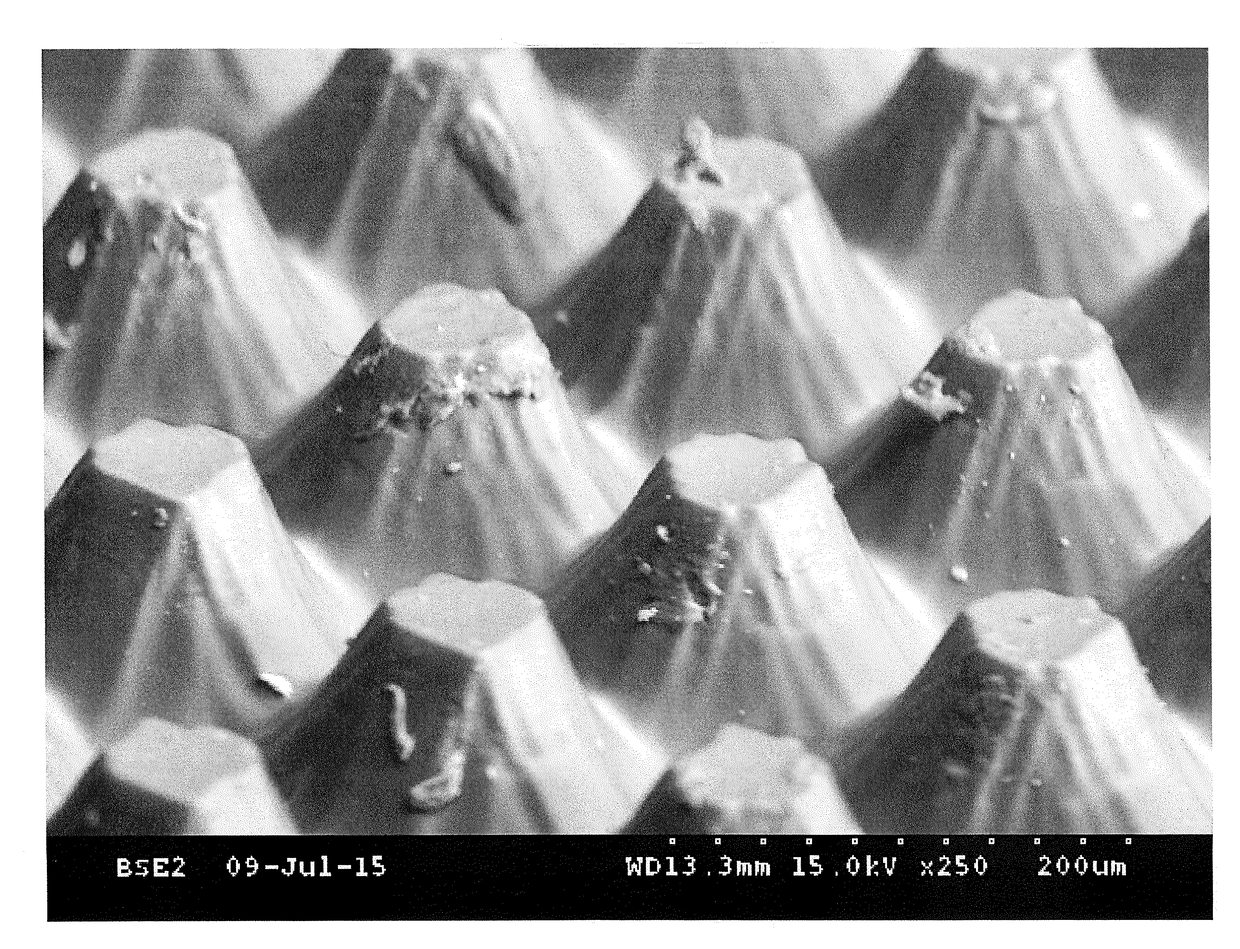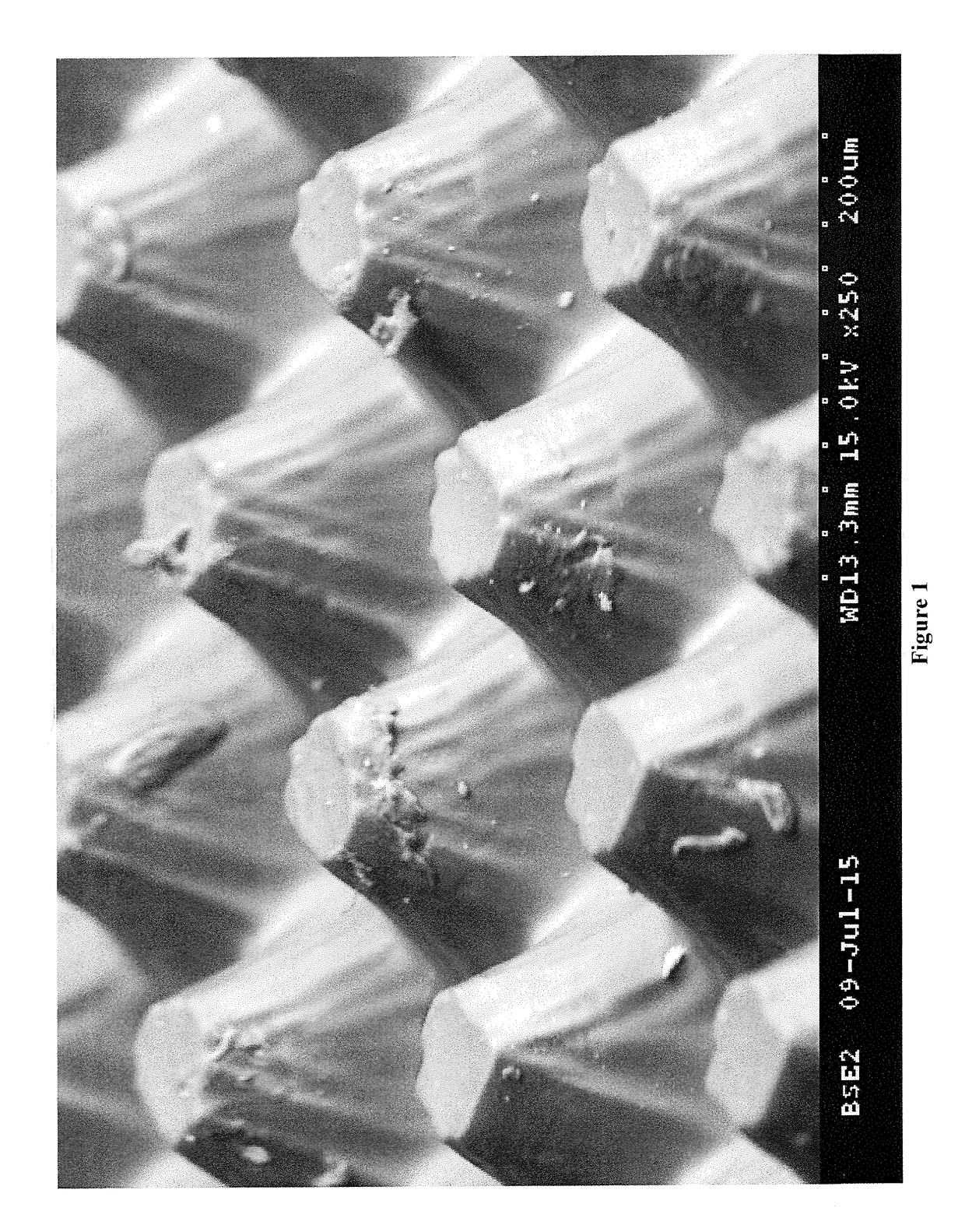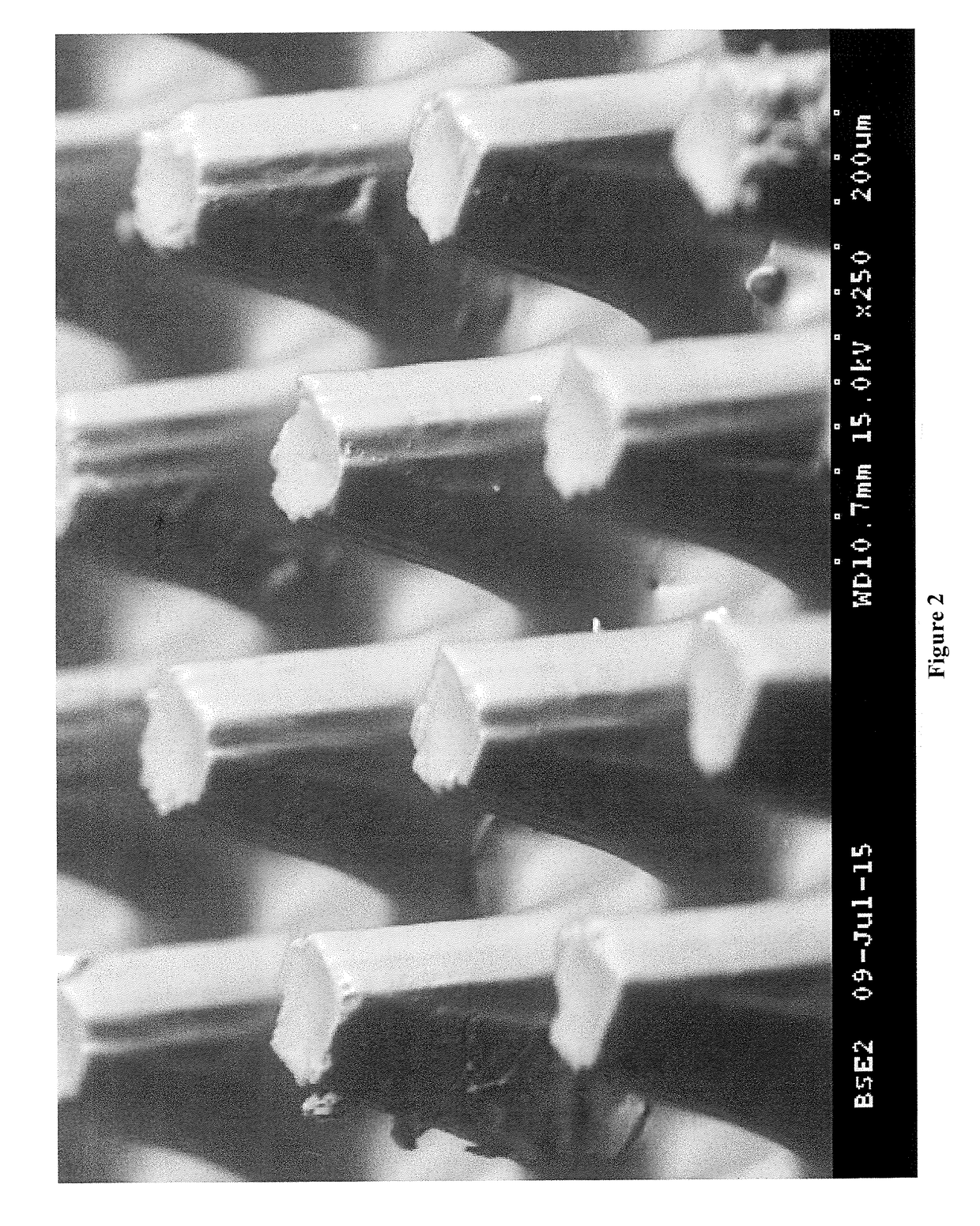Method of making relief image printing elements
a relief image and printing element technology, applied in the field of relief image printing elements, can solve the problems of image degradation and surface contracting, and achieve the effect of reducing the print gain
- Summary
- Abstract
- Description
- Claims
- Application Information
AI Technical Summary
Benefits of technology
Problems solved by technology
Method used
Image
Examples
Embodiment Construction
[0035]The present invention relates generally to flood exposing photocurable printing blanks to actinic radiation from modulated UV LED light sources to crosslink and cure portions of the photocurable printing element and produce the desired relief image therein. While the present invention is described with respect to UV LEDs, the present invention is also usable with other high intensity UV light sources that can be modulated to a lower intensity and which can be used to flood expose the photocurable printing blank. In a general sense, the present invention is relevant to flood exposing of photocurable printing blanks to high intensity UV light sources that have been modulated to a lower intensity.
[0036]Based thereon, the present invention relates generally to a method of flood exposing a photocurable printing blank to actinic radiation from a UV LED light source, the photocurable printing blank comprising a support, at least one photocurable layer upon the support, wherein the at...
PUM
| Property | Measurement | Unit |
|---|---|---|
| wavelength | aaaaa | aaaaa |
| wavelength | aaaaa | aaaaa |
| distance | aaaaa | aaaaa |
Abstract
Description
Claims
Application Information
 Login to View More
Login to View More - R&D
- Intellectual Property
- Life Sciences
- Materials
- Tech Scout
- Unparalleled Data Quality
- Higher Quality Content
- 60% Fewer Hallucinations
Browse by: Latest US Patents, China's latest patents, Technical Efficacy Thesaurus, Application Domain, Technology Topic, Popular Technical Reports.
© 2025 PatSnap. All rights reserved.Legal|Privacy policy|Modern Slavery Act Transparency Statement|Sitemap|About US| Contact US: help@patsnap.com



